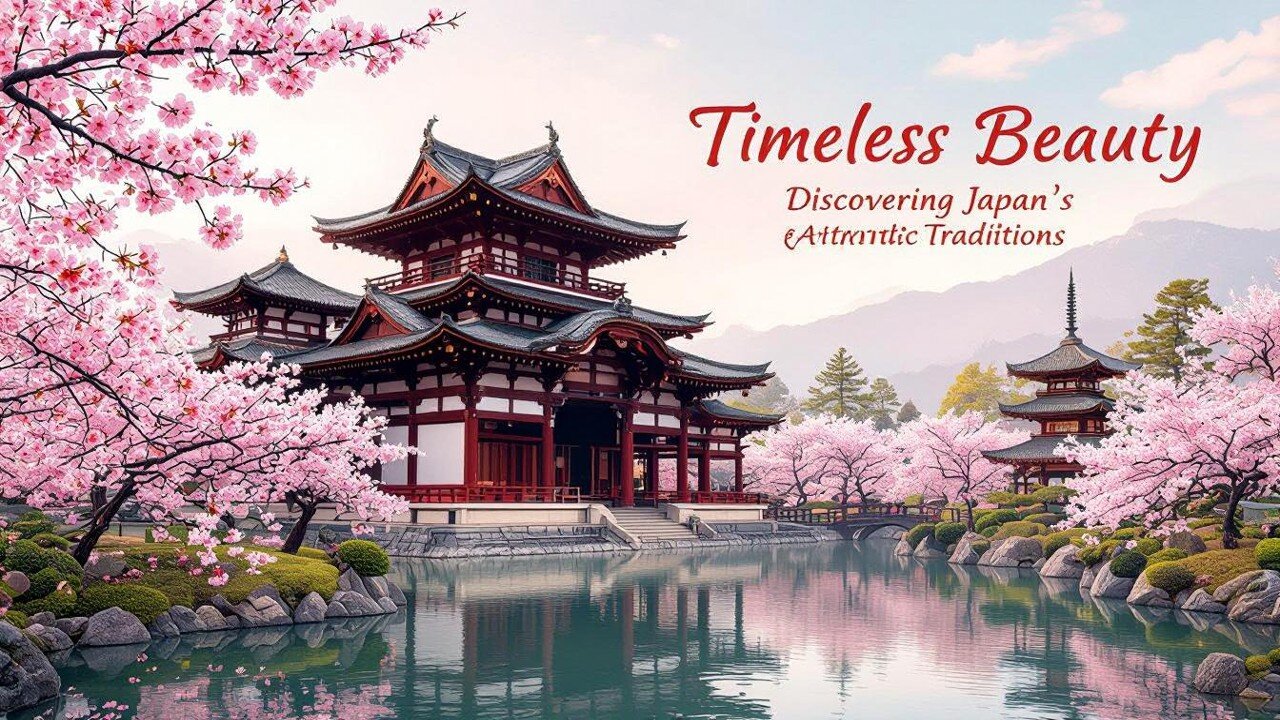Premium Only Content

Japanese Tradition, Art, And Evolution
This collection of sources explores the depth and diversity of Japanese art and culture, tracing its evolution across major cities and traditional practices. It highlights Kyoto’s role in shaping refined aesthetics through literature like The Tale of Genji and the tea ceremony, while Edo (modern-day Tokyo) emerged as a dynamic hub for popular arts such as Kabuki theater and Ukiyo-e woodblock prints, embodying the “floating world” sensibility. The sources also delve into aspects of daily life and craftsmanship, from intricate woodworking to the concept of ma (negative space) in design, as well as the symbolic artistry of Ikebana flower arranging and calligraphy. Nature and Shinto beliefs are shown as enduring influences, reflected in landscape painting, bonsai, and the fleeting beauty of cherry blossoms. Finally, the collection considers the resilience of Japanese cities, emphasizing their cycles of destruction and renewal as integral to cultural identity.
╔═╦╗╔╦╗╔═╦═╦╦╦╦╗╔═╗
║╚╣║║║╚╣╚╣╔╣╔╣║╚╣═╣
╠╗║╚╝║║╠╗║╚╣║║║║║═╣
╚═╩══╩═╩═╩═╩╝╚╩═╩═╝
#JapaneseArt #JapaneseCulture #Kyoto #Edo #Tokyo #TaleOfGenji #TeaCeremony #FloatingWorld #Woodworking #Ma #Ikebana #Calligraphy #Shinto #NatureInArt #JapaneseAesthetics #Bonsai #Kabuki #Ukiyoe #CherryBlossoms #Resilience #CulturalHeritage #ArtAndDesign #TraditionalArts
-
![Mr & Mrs X - Feminism, Family, Federal Reserve, The Rise Of The [DS] Agenda](https://1a-1791.com/video/fwe2/12/s8/1/6/F/R/n/6FRnz.0kob-small-Mr-and-Mrs-X-Feminism-Famil.jpg) 58:10
58:10
X22 Report
9 hours agoMr & Mrs X - Feminism, Family, Federal Reserve, The Rise Of The [DS] Agenda
181K50 -
 16:37
16:37
Robbi On The Record
1 day ago $7.77 earnedThe Theater of Manufactured Outrage - When Left and Right Dance for the Same Puppet Master
37.8K39 -
 31:27
31:27
Stephen Gardner
21 hours ago🔥BOMBSHELL: Mortician EXPOSES Charlie Kirk Autopsy - The Key Evidence EVERYONE Missed!
130K290 -
 30:00
30:00
BEK TV
3 days agoGUT HEALTH AND THE POWER OF KIMCHI WITH KIM BRIGHT ON TRENT ON THE LOOS
61.2K6 -

IamNibz
11 hours ago $2.60 earned6-7 Minecraft Stream
31.8K6 -
 36:53
36:53
daniellesmithab
4 days agoSupporting Alberta's Teachers and Students
136K27 -
 1:25:28
1:25:28
VapinGamers
6 hours ago $2.40 earnedTools of the Trade - EP07 Lights, Camera, Go Live with Joker - !rumbot !music
30K5 -
 14:38
14:38
Nikko Ortiz
1 day agoADHD vs Autism
98.4K54 -
 LIVE
LIVE
TonYGaMinG
6 hours ago🟢 INDUSTRIA 2 PLAYTEST / ACTIVE MATTER LATER
85 watching -
 2:43:39
2:43:39
FoeDubb
6 hours ago🏰KINGDOM MENU: 🎮SHORT SATURDAY SESH ON DECK DILLY DILLY!!
27.9K3
